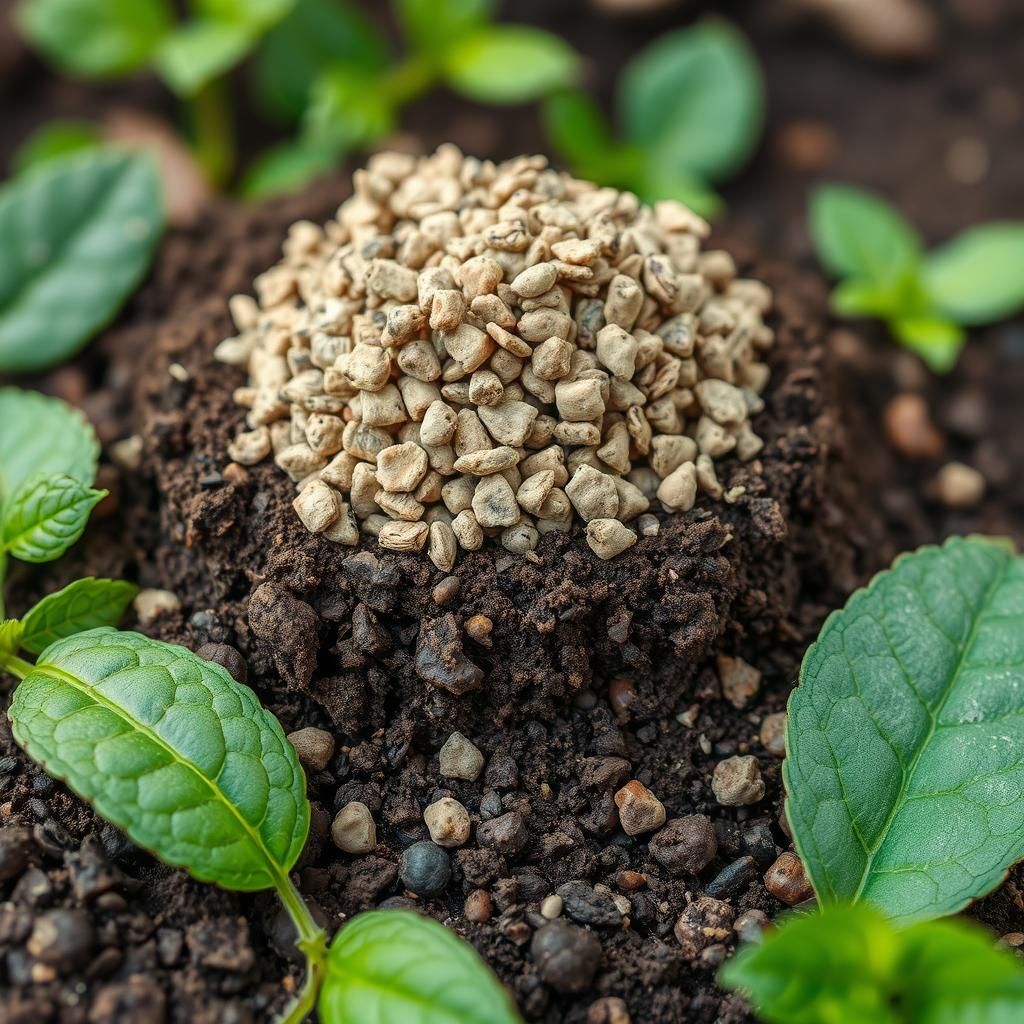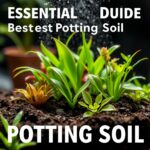Choosing Between Soil Wetter Granules or Liquid: Which is Best for Your Garden?

In the pursuit of a thriving garden, moisture management plays a crucial role in promoting healthy plant growth. Gardeners often find themselves faced with the choice between soil wetter granules and liquid formulations, each offering distinct advantages. Understanding the nuances of these options can significantly impact the effectiveness of soil hydration. This article delves into the characteristics, benefits, and ideal applications of both soil wetter granules and liquids, guiding you to make an informed decision. Whether you're tackling dry patches or enhancing overall soil moisture, choosing the right product can lead to a flourishing garden and more vibrant plants.
Soil Wetter Granules vs. Liquid: Which is More Effective?
Soil wetter products, whether in the form of granules or liquid, are designed to enhance water retention in soil, making them particularly useful in drought-prone areas or for plants requiring consistent moisture. Granules often provide a slow-release option, gradually rehydrating the soil over time, whereas liquid wetters can offer a more immediate effect and ease of application, allowing for uniform distribution. The choice between these two forms largely depends on the type of soil, the specific plants being watered, and the gardener's preference for application methods.
Benefits of Soil Wetter Granules
Soil wetter granules offer numerous advantages, including their ability to improve the porosity of the soil and enhance its capacity to retain moisture. Once applied, these granules slowly dissolve and bind with soil particles, thus creating micro-cavities that hold water more effectively. This leads to improved root development and ensures that plants receive a steady supply of water over an extended period, reducing the need for frequent irrigation.
Advantages of Liquid Soil Wetters
Liquid soil wetters are known for their rapid action, as they quickly penetrate the soil, providing an immediate impact on water dispersion and retention. Their ease of application makes them ideal for treating larger areas or for use during irrigation, as they mix well with water and can be distributed evenly through irrigation systems. Additionally, they can be beneficial in overcoming soil repellency, allowing water to more readily absorb into dry areas.
Application Methods for Granules and Liquids
When applying soil wetters, the method can greatly influence their effectiveness. Granules are typically scattered over the soil surface or mixed into the top several inches of soil before watering, allowing them to activate properly. In contrast, liquid wetters are usually diluted in water and can be applied directly through a watering can or spray system, ensuring thorough coverage. Understanding the correct application method for each product type is essential for achieving optimal results.
See also:
Soil Types and Their Interaction with Wetters
Different soil types respond variably to soil wetters, with sandy soils often benefiting more from liquid formulations due to their fast drainage characteristics. Conversely, clay soils may retain the benefits of granules longer, promoting sustained water retention. Gardeners should consider their specific soil composition, as this will affect how efficiently their chosen soil wetter performs, ultimately impacting plant health and growth.
Environmental Considerations
When selecting between soil wetter granules or liquids, environmental considerations play a crucial role. Granules typically have a longer-lasting effect, which may reduce the frequency of applications and minimize potential runoff during heavy rains. Liquid wetters, while effective, may pose a risk of leaching into waterways if applied excessively. Thus, understanding the environmental impact of each type can assist gardeners in making informed decisions that support sustainable gardening practices.
| Type | Application | Speed of Action | Longevity | Soil Compatibility |
|---|---|---|---|---|
| Granules | Spread on soil surface | Slow | Long-lasting | Mixed with soil |
| Liquid | Mixed with water | Fast | Short-term | Best for sandy soils |
Understanding the Differences Between Soil Wetter Granules and Liquid
When deciding between soil wetter granules and liquid solutions for your garden, it's crucial to understand how each product interacts with soil composition and moisture retention. Granules often provide a slow-release action, allowing the soil to gradually absorb moisture, which can be beneficial for steady hydration in the long term. In contrast, liquid options tend to deliver immediate results, quickly penetrating the soil and enhancing its ability to retain water. This instant gratification can be advantageous for newly planted areas or during periods of drought, but it might require more frequent applications to maintain optimal soil conditions. Ultimately, the choice between the two depends on your garden's specific needs, soil type, and watering regimen.
Benefits of Using Soil Wetter Granules
Soil wetter granules offer several benefits that can improve the health of your garden. They work by breaking down tightly packed soil, allowing water to penetrate effectively and reducing runoff. The slow release of moisture means that they provide lasting moisture retention capabilities, which can be especially useful during dry spells. Additionally, using granules can minimize the risk of over-watering, as they gradually release moisture into the soil, ensuring that plants receive a consistent supply without the chance of waterlogging.
Advantages of Liquid Soil Wetters
Liquid soil wetters provide their own set of advantages, primarily their rapid application and immediate effectiveness. They can be sprayed directly onto the soil or mixed with irrigation systems, allowing for quick absorption by plant roots. This is particularly useful in scenarios requiring instant remediation for drought-stressed plants. Liquid options can also be precisely measured, enabling gardeners to assess and manage the exact amount of moisture being delivered, thereby taking control of the soil moisture levels more efficiently.
See also:
Application Methods for Granules vs. Liquid
The application methods for soil wetter granules and liquids differ significantly, impacting the overall effectiveness of each product. Granules are typically spread evenly over the soil surface and then watered in, allowing them to activate gradually as they dissolve in moisture. This method encourages deep moisture retention. In contrast, liquid solutions can be applied directly or through watering systems for immediate results, making it easier to cover larger areas quickly. Understanding the optimal application method for each type is essential to maximize their proficiency and ensure that the plants benefit fully.
Impact on Soil Health
The choice between granules and liquid soil wetters can have a noticeable impact on soil health. Granules tend to integrate better with the soil structure, promoting beneficial microbial activity and enhancing overall soil quality over time. This slow but steady improvement allows plants to develop robust root systems. On the other hand, liquid options might provide a quick boost, which is helpful for immediate plant recovery but doesn’t necessarily contribute to long-term soil health. Balancing the use of both types of products may also offer a more comprehensive approach to maintaining an optimal garden environment.
Cost Considerations for Gardeners
Cost is an important factor when deciding between soil wetter granules and liquids. Generally, granules may come at a lower price per application when considering their longevity and ability to improve soil structure over extended periods. However, the initial investment for liquid products might be higher, considering their direct application and immediate benefits. Gardeners should evaluate their budgets, frequency of application, and the size of their gardens to determine the most cost-effective solution that aligns with their gardening goals.
Questions from Our Readers
What are soil wetter granules and liquids?
Soil wetter granules and liquids are products designed to enhance the absorption of water in soil, particularly in areas where the soil is hydrophobic or resistant to moisture. These products reduce surface tension, allowing water to penetrate the soil more effectively, which can lead to improved plant health and growth.
How do I apply soil wetter granules or liquid?
To apply soil wetter products, it is essential to follow the manufacturer's instructions regarding dosage and method of application. Typically, soil wetter granules can be scattered over the soil and watered in, while liquids can be mixed with water and applied through irrigation systems or as a direct soil treatment.
See also:
When should I use soil wetter products?
Soil wetter products should be used when you notice that the soil is dry or repellent, especially in drought conditions or after prolonged periods without rain. Early application can help maximize water retention and ensure that plants receive adequate moisture during critical growth periods.
Are soil wetter granules or liquids safe for my plants?
Yes, soil wetter granules and liquids are generally safe for plants when used according to the recommended guidelines. These products are formulated to improve water penetration without causing harm to the soil structure or plant health, making them a beneficial addition to your gardening practices.

If you want to read more articles like Choosing Between Soil Wetter Granules or Liquid: Which is Best for Your Garden?, we recommend you check out our Soil category.
Leave a Reply
Related Articles